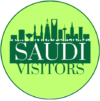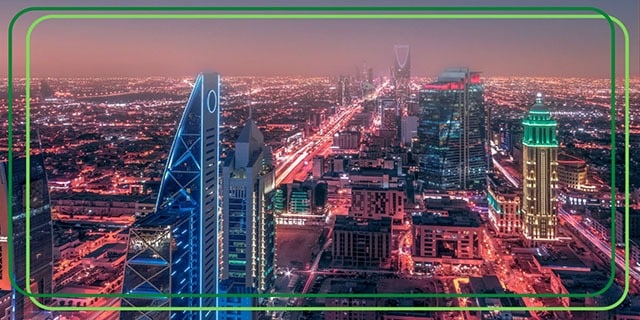Saudi Arabia, the Kingdom located on the Arabian Peninsula, is known for its rich cultural heritage, vast deserts, and significant influence in the Middle East. Its cities are a blend of tradition and modernity, with some bustling urban centers that play crucial roles in the country’s economy, culture, and politics. Here, we explore the largest cities in Saudi Arabia based on population and economic importance.
محتوى المقالة
Largest Cities in Saudi Arabia
While the Kingdom has numerous cities, some stand out due to their population, economic contribution, or historical and religious importance. Here are the largest cities in Saudi Arabia:
1. Riyadh
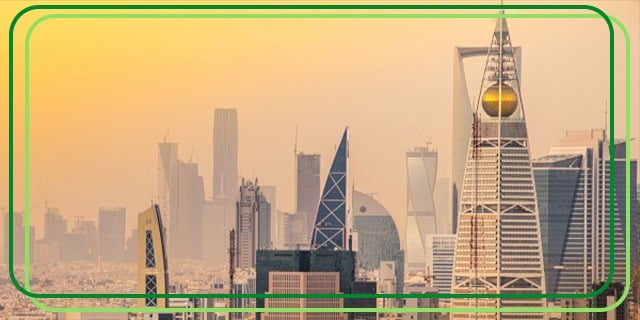
Population: Over 7 million
Region: Central Saudi Arabia
Riyadh, the capital and one of the largest cities in Saudi Arabia, is the political and administrative heart of the country. This city in saudi arabia is home to numerous government institutions and international businesses. Riyadh’s rapid growth in the past few decades has transformed it into a modern metropolis, with towering skyscrapers, luxurious shopping malls, and expansive infrastructure projects.
It is one of saudi arabia major cities that considers a hub for culture, with museums, art galleries, and historical sites like the Masmak Fort.
Riyadh’s economy is diverse, with key industries including finance, technology, and construction. The city is at the center of the Vision 2030 reform plan, aimed at diversifying the economy and reducing the country’s reliance on oil. Riyadh also hosts the annual Janadriyah Festival, celebrating Saudi Arabia’s culture and traditions.
king khalid airport saudi arabia is one of the major international airports in Riyadh. It is crucial for international travel, linking the kingdom to destinations in Europe, Asia, Africa, and other parts of the Middle East. It is also a major gateway for Hajj pilgrims traveling to Mecca and Medina.
Facts of Riyadh: The Beating Heart of Saudi Arabia
Economic Importance: Riyadh is home to major companies, government offices, and the King Abdullah Financial District (KAFD), one of the largest financial hubs in the Middle East.
Cultural Heritage: The historic area of Diriyah, a UNESCO World Heritage Site, highlights Riyadh’s role in the unification of Saudi Arabia.
Modern Developments: Riyadh is undergoing rapid urbanization under Vision 2030, with projects like the Riyadh Metro and the Riyadh Green Program.
-
Jeddah
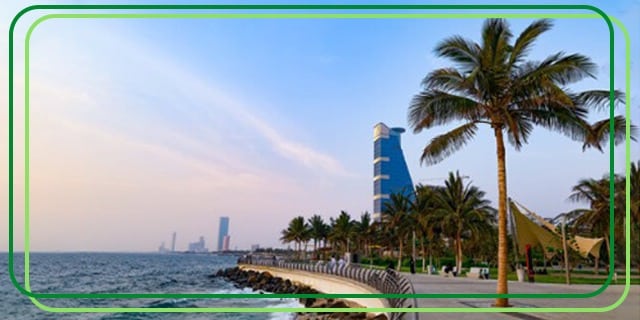
Population: Over 4 million
Region: Western Saudi Arabia
Located along the Red Sea coast, Jeddah is the second-biggest city in saudi arabia and an essential port city. Known as the “Bride of the Red Sea,” Jeddah serves as the gateway for Muslims traveling to the holy cities of Mecca and Medina for Hajj and Umrah. Jeddah is one of the largest cities in Saudi Arabia has a rich history as a center for trade and commerce and is famous for its mix of modern and historical architecture.
Jeddah’s economy is based on its port, commerce, and tourism, which contribute significantly to the nation’s GDP. It is the best city of saudi arabia and home to a growing arts and cultural scene, with the Jeddah Waterfront and its modern art galleries drawing both locals and international visitors. Jeddah’s corniche, with its scenic views of the Red Sea, is a popular destination for residents and tourists alike.
Facts of Jeddah: The Gateway to Mecca
Historical Significance: The Al-Balad district, with its coral-built houses, reflects the city’s rich trading history.
Tourism and Leisure: The Jeddah Corniche, lined with public art installations and beaches, is a favorite spot for residents and visitors alike.
Future Projects: The jeddah tower saudi arabia, once completed, will be the tallest building in the world, symbolizing the city’s global aspirations.
-
Makkah al Mukaromah Saudi Arabia (Mecca)
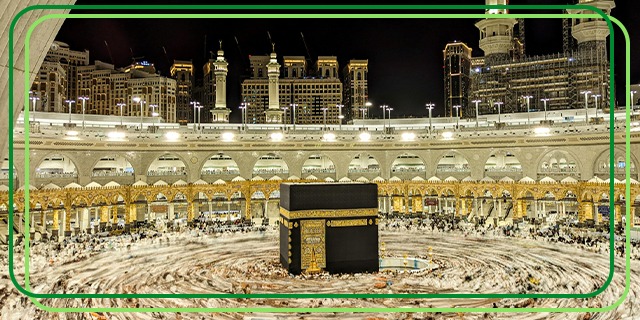
Population: Over 2 million
Region: Western Saudi Arabia
Makkah, one of the most significant cities in the Islamic world, is not only one of the largest cities in Saudi Arabia but also a city of immense religious importance. Every year, millions of Muslims from all over the world visit Makkah to perform Hajj, one of the five pillars of Islam. The city’s most famous landmark is the Masjid al-Haram, the world’s largest mosque, surrounding the Kaaba, which Muslims face during prayer.
Makkah’s economy is largely driven by religious tourism, with vast infrastructure projects being developed to accommodate the increasing number of visitors each year. The city is also undergoing modernization to improve its transport systems and hospitality services.
Many people ask what the time in mecca saudi is arabia? You can know time in saudi arabia makkah from here.
Facts of Makkah: The Spiritual Center of Islam
Key Landmark: The Kaaba, located in the Masjid al-Haram, is the focal point of Islamic worship.
Economic Impact: Religious tourism contributes billions to Saudi Arabia’s economy.
Modern Infrastructure: Mecca has seen significant investment in transportation and accommodation, including the expansion of the Grand Mosque and the Haramain High-Speed Railway.
-
Medina (Madinah)

Population: Over 1.5 million
Region: Western Saudi Arabia
Medina, another holy city in Saudi Arabia, is one of the most significant religious centers for Muslims. It is home to the Prophet’s Mosque, an important Islamic historical mosque in madinah saudi arabia, which houses the tomb of Prophet Muhammad. Medina attracts millions of pilgrims annually, especially during Hajj and Umrah, making it a vital hub for religious tourism.
Medina is known for its more tranquil atmosphere compared to Mecca, with a slower pace of life. The city’s economy is driven by religious tourism and commerce, with a focus on serving the needs of the pilgrims. In recent years, Medina has also been undergoing development to enhance its infrastructure and services for visitors.
Facts of Madinah: The City of the Prophet
Religious Sites: The Prophet’s Mosque (Al-Masjid an-Nabawi) is a major pilgrimage site and a marvel of Islamic architecture.
Educational Role: Medina is also a center for Islamic scholarship, hosting numerous religious institutions.
Tourism Growth: The city has developed infrastructure to accommodate millions of visitors annually.
-
Al Khobar kingdom of Saudi Arabia
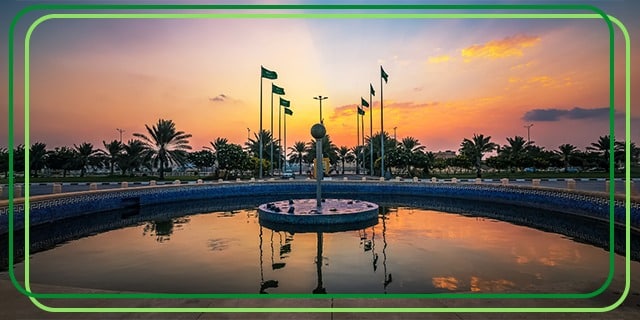
Population: Over 700,000
Region: Eastern Saudi Arabia
Khobar is a major city located in the Eastern Province of Saudi Arabia, near the Arabian Gulf. It is one of the largest cities in Saudi Arabia and part of the Dammam metropolitan area, which includes the neighboring cities of Dhahran and Al-Khobar. Khobar’s location makes it a vital center for trade and commerce, particularly due to its proximity to the oil fields of the Eastern Province.
The city has a thriving economy, heavily reliant on oil and gas, as well as other industries such as real estate and retail. Khobar also has a growing expat community, largely due to the presence of many multinational companies and businesses in the area. The city’s Corniche, with views of the Persian Gulf, is a popular destination for both residents and tourists.
Facts of Al-Khobar: A Vibrant Coastal City
Strategic Location: Its proximity to Bahrain via the King Fahd Causeway enhances its importance in trade and tourism.
Modern Amenities: Al-Khobar is known for luxury shopping malls, fine dining, and waterfront attractions like the Khobar Corniche.
Industrial Growth: The city contributes to the oil industry and hosts multinational corporations.
-
Dammam
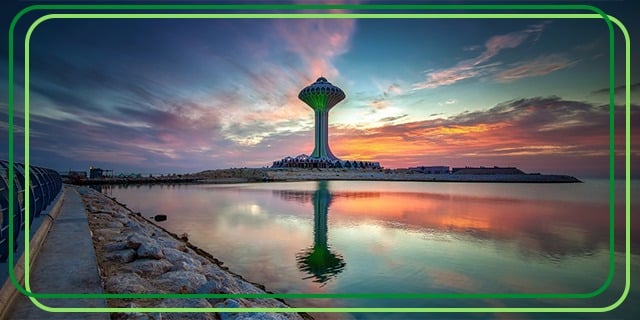
Population: Over 1 million
Region: Eastern Saudi Arabia
Dammam is one of the largest cities in Saudi Arabia and the capital of the Eastern Province. It is a key economic hub in Saudi Arabia due to its proximity to the country’s oil reserves. This city is home to the headquarters of Saudi Aramco, the world’s largest oil company, and is a major center for the oil industry. Dammam also benefits from a significant port that serves as a gateway for imports and exports.
Dammam’s economy is heavily centered on oil, gas, and petrochemical industries. Dammam is also known for its well-developed infrastructure, including transportation systems and modern shopping malls. This city is connected to neighboring Khobar and Dhahran, creating a large urban area that is vital to the region’s economy.
Facts of Dammam: The Industrial Powerhouse
Economic Significance: The city’s proximity to the Ghawar Field, the world’s largest oil field, underscores its importance in the global energy sector.
Port City: The King Abdulaziz Port in Dammam plays a vital role in Saudi Arabia’s trade.
Lifestyle: With a blend of modern living, seaside attractions, and a growing expatriate population, Dammam is a thriving cosmopolitan city.
-
Tabuk
Population: Over 500,000
Region: Northwestern Saudi Arabia
Tabuk is in the northwestern part of Saudi Arabia, near the borders with Jordan. It has been historically important due to its strategic location along ancient trade routes. The city is known for its agricultural activities, particularly the cultivation of vegetables and fruits in its fertile land.
Tabuk has seen significant development in recent years, especially with the establishment of the NEOM project, a futuristic city being built as part of Saudi Arabia’s Vision 2030. The city’s economy is diversifying, with growing investments in tourism, agriculture, and infrastructure projects.
Moving to Saudi Arabia
Moving to Saudi Arabia can be an exciting journey, offering a mix of modern amenities and deep-rooted cultural traditions. Whether you’re drawn by career opportunities or the unique lifestyle, understanding what Saudi Arabia benefits can help you make an informed decision.
When considering what is the best city in Saudi Arabia to settle in, cities like Riyadh, Jeddah, and Dammam often top the list as the largest cities in Saudi Arabia. Riyadh, the capital, is a hub for business and government, while Jeddah offers a more relaxed coastal vibe with access to the Red Sea. Each city has its charm, and your choice depends on your priorities, whether professional or lifestyle related.
For those planning a visit, timing is key. The best time to visit Saudi Arabia is during the cooler months, from November to February, when the weather is pleasant and perfect for outdoor activities. Summers can be scorching, especially in desert regions. Additionally, be mindful of the Saudi Arabia time difference if you’re traveling from afar; adjusting your schedule can help minimize jet lag. Exploring cities like Riyadh or Jeddah during the ideal season lets you experience the kingdom’s rich heritage, modern attractions, and warm hospitality to the fullest.
How Does Saudi Arabian Clothing Affect the Weather
Saudi Arabian clothing, specifically traditional garments like the dishdasha Saudi Arabia for men and abaya for women can influence personal comfort and perception of the weather, but it doesn’t directly alter the weather itself.
The traditional clothing in Saudi Arabia is made from lightweight, breathable fabrics like cotton and linen, which help to keep the body cool in the Saudi Arabia nature weather and hot, desert climate. The loose-fitting nature of these garments allows air circulation, preventing excessive sweating and helping to maintain a comfortable body temperature.
Long sleeves and full-body coverage help protect the skin from the sun. In cooler months, the same clothing provides insulation from the cold desert nights.
Conclusion
The largest cities in Saudi Arabia are at the heart of the country’s cultural, economic, and political landscape. Riyadh, Jeddah, Mecca, Medina, Khobar, Dammam, and Tabuk each play a vital role in shaping the Kingdom’s present and future.
From the thriving business hub of Riyadh to the sacred atmosphere of Mecca and Medina, these cities offer a unique blend of modern development and rich cultural heritage, making them significant both regionally and globally.
